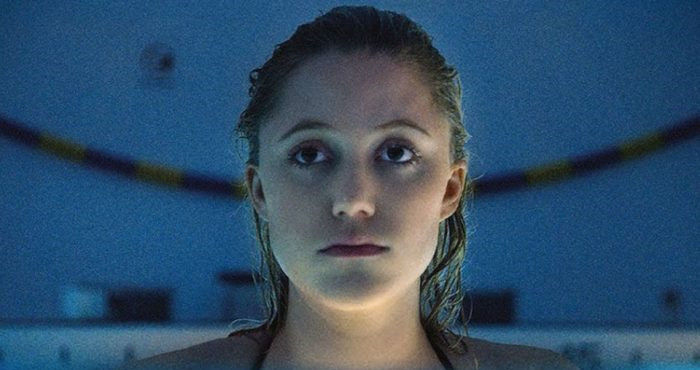
As Halloween creeps up on us once again, genre fans rejoice the most excellent time of year! And what better time to do a round-up of the best horror films of all time?
There’s a tendency amongst horror fans to venerate their favorite films, and this explains the inclusion of many genre classics in this list. And while cinematic masters like Hitchcock could have easily held dominance (two of his best will be found here), we wanted to make room for several other masters, so we narrowed down several legendary filmmaker’s work to just one selection each; so the likes of Dario Argento, Mario Bava, Wes Craven, George Romero and Hammer Studios each get some representation, even though we all know they’re responsible for many other first-rate cinematic nightmares.
The horror films on this list are the apogee of the genre and are guaranteed to curdle your blood, raise your hairs, and have you howling in terror and excitement. And please join the discussion in the comments section at the end of the article (be nice!) and be sure to mention your favorites so we can consider them for future lists.
You’ve been warned, now bravely go forth if you dare.
25. A Nightmare on Elm Street (1984)
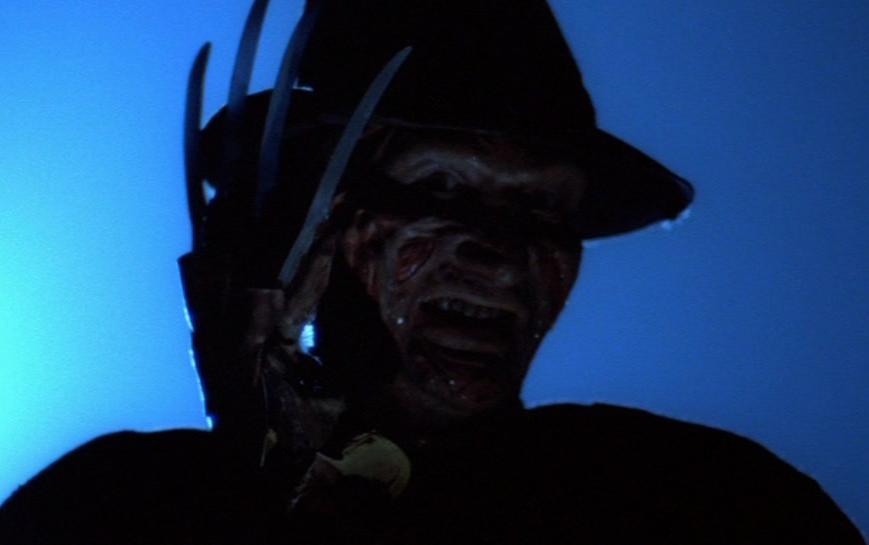
A slasher film with surrealist standards, Wes Craven’s effects-heavy exploitation horror film A Nightmare on Elm Street introduced razor-fingered boogeyman Freddy Krueger (Robert Englund) to the world, and no one’s had a decent night’s rest since.
The film focuses on several promiscuous teens whose dreams find them hounded, hunted, and killed by Freddy. Once killed in their dreams they die in reality and soon victimized teen Nancy (Heather Lagenkamp) starts to connect who Freddy really is and hatches a way to get back at him (hint: you need Johnny Depp as your boyfriend for optimal benefits and occasional smooching).
To quote Guillermo del Toro: “I think that [A Nightmare on Elm Street] really is one of the best fairytales of any decade, because Wes Craven understands the roots of those myths.”
For all of its false awakenings, red herrings, jump scares, and creative kills, this is an unflinchingly original top-hole horror that spawned a cultural phenomenon, brought back monster movies, boosted nightlight sales, and deserves it’s designation as a classic.
24. Kill List (2011)
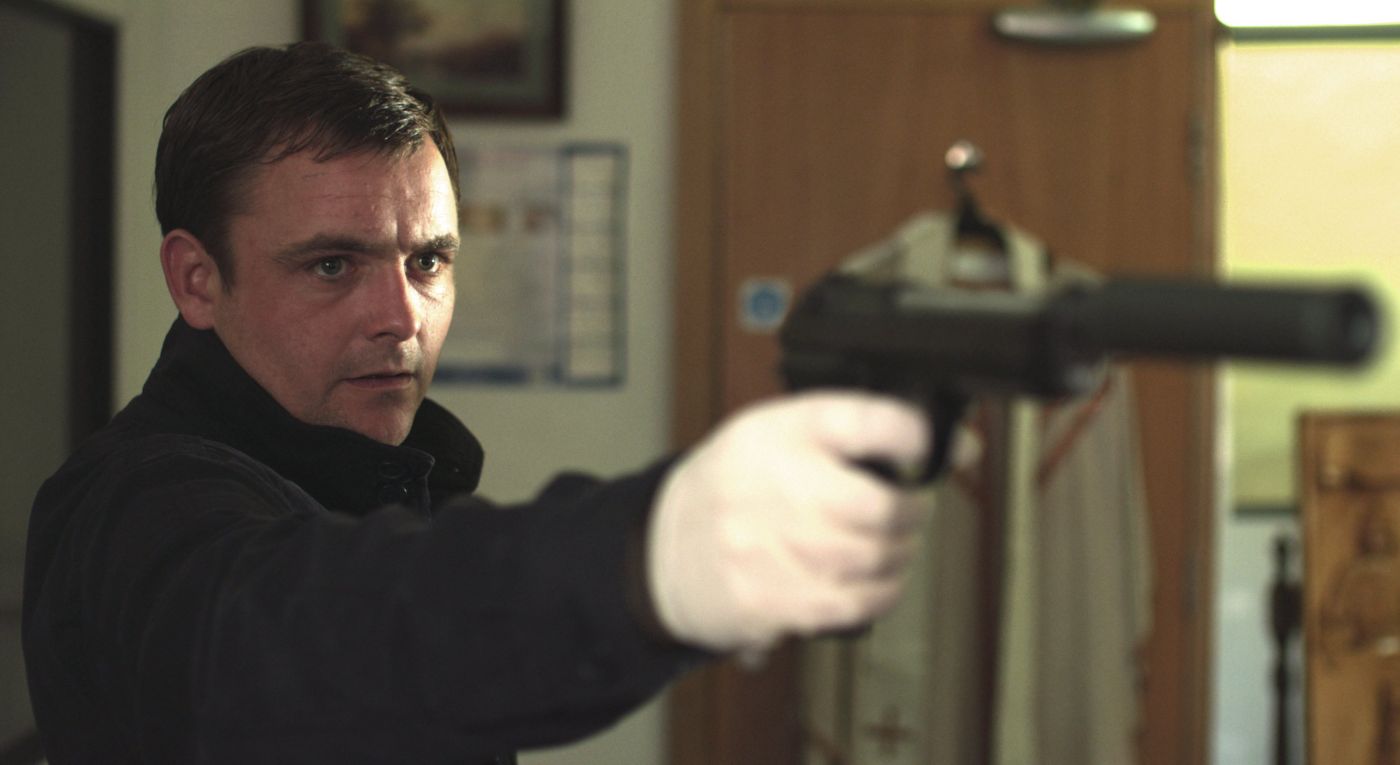
A relentless and tense thriller that subverts expectations, Ben Wheatlye’s Kill List benefits from a deliberate slow burn start, establishing a mood and a tone that eventually and rewardingly drums tension and builds anxiety to the ultimate mad rush.
The story involves Jay (Neil Maskell) and Gal (Michael Smiley), longtime pals and former soldiers who are now contract killers. Little do either know that a new assignment they’ve agreed upon is going to lead them to the darkest possible place imaginable.
As the plot takes many unpredictable turns, humor is present to diffuse the mounting mental pressure, and Wheatley works the audience like a master, making us anxious, and uneasy at every sharp turn and nasty, barbed twist. The last half hour is all edge-of-your-seat suspense and the closer is as unforgettable as it is ultimately inexorable.
“Andy Stark, my producer, said to me, ‘make a horror film’,” Wheatley explained to Taste of Cinema. “I thought, if I’m gonna make a horror film I’m gonna make something that’s truly as fucking horrible as possible. So when I wrote the script I made a list of my nightmares. My son, who was three or four at the time, was tied up in that, and I was terrified at that kind of aspect of fatherhood and so put that in. I had these recurring nightmares about cults since I was a little kid so I put that in as well.”
Few full-throttle thrillers this century or last have been as atmospheric, effective, and artfully crafted as Kill List.
23. An American Werewolf in London (1981)
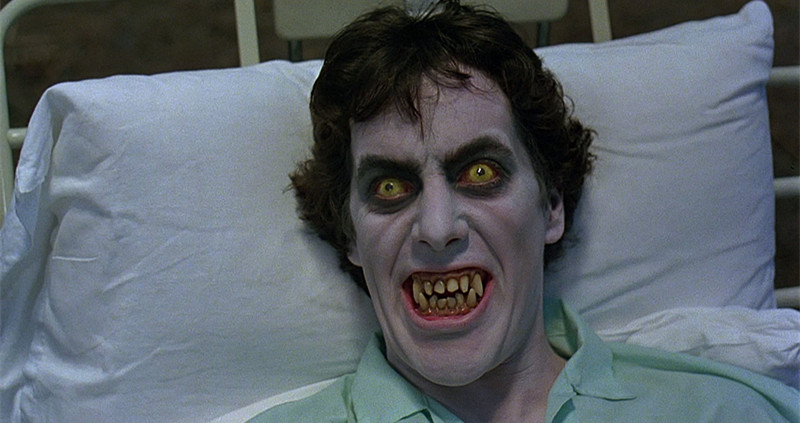
With undeniable and enviable skill, writer/director John Landis’s alternately frightening and funny film, An American Werewolf in London has withstood the passing decades because of its genius balance of horror, dark comedy, and drama.
You can’t help but root for David Kessler (David Naughton), such a nice mannered young lad, but then again, after an unfortunate hike over the moonlit moors of Scotland––which he was warned to steer clear of––he keeps transforming into a nasty AF werewolf that delights in tearing people to pieces. As an added perk for his victims their torture goes on, cursed to roam and rot until Dave himself dies and the werewolf curse along with him.
Rick Baker’s practical special effects are genius, truly this film has the best werewolf transformation sequence of all time.
Aside from bending genre rules along to a perfect CCR-soaked soundtrack (“Bad Moon Rising” has given me chills ever since), An American Werewolf in London provides the added freakout; you will NEVER comfortably walk through a subway station ever again, ever.
22. Black Sunday (1960)
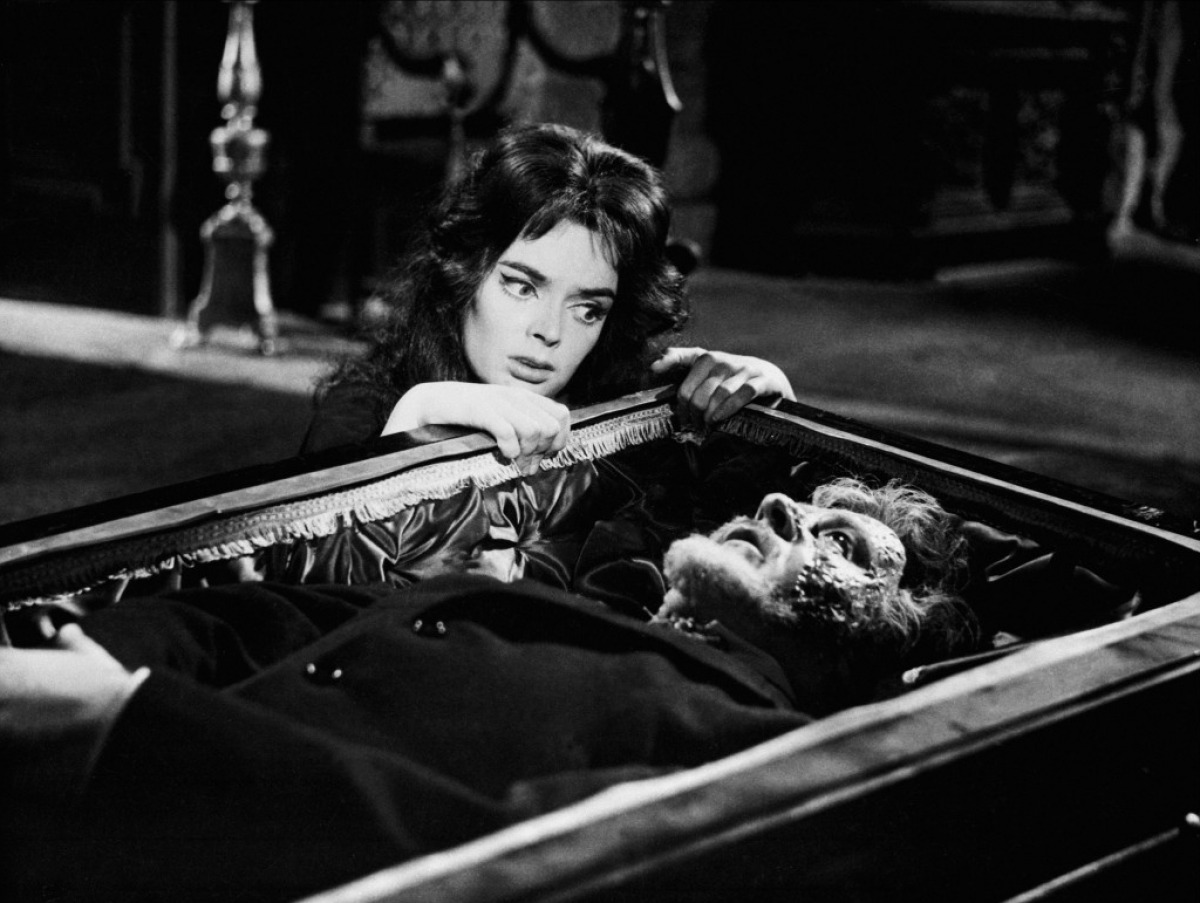
The often imitated Italian master Mario Bava made his directorial debut with the gothic horror Black Sunday. A visual innovator with incredible instincts for atmosphere and environment, Bava, with this his breakthrough, ushered in the Golden Age of Italian horror.
Inspired by Nikolaj Gogol’s short story “Vij,” Black Sunday was controversial for all the violence and bloodshed it depicted in its sordid tale of vampiric revenge. Actress Barbara Steele, in the dual role of Katia Vajda and Princess Asa Vajda would become a genre icon and an archetypal image of evil still paid homage to today, particularly in the films of Tim Burton.
Decadent in texture, gruesomely beautiful, and uncommonly atmospheric, Black Sunday is a masterclass in monochrome magnificence and timeless horror tradition. Rarely do depraved images of shocking sexual suggestion and hyperbolic human cruelty leave such a lasting impression on the psyche. Amazing, agitating, and inspired stuff.
21. The Fly (1986)
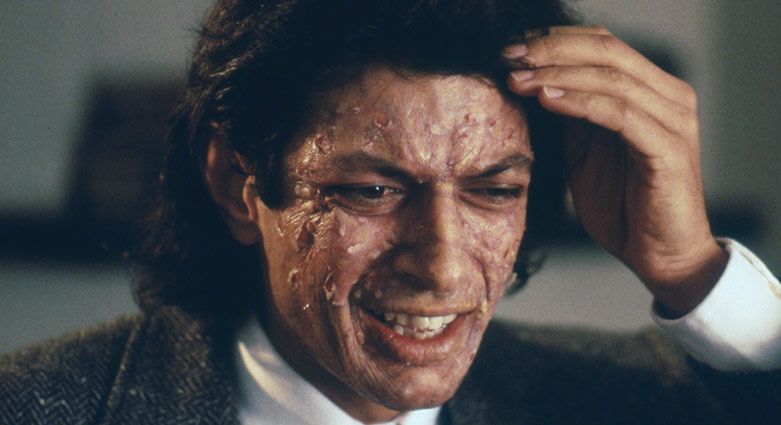
Ostensibly a remake of the 1958 Kurt Neumann sci-fi classic, this 1986 David Cronenberg rendition is pure horror. During the 1970s and 1980s Cronenberg was king of creating atmospheric and immersive environments inundated with body horror motifs and laudably questionable characters and The Fly embodies this exquisitely.
Genetic scientist Seth Brundle (Jeff Goldblum) has an accident when testing his revolutionary teleportation decide that fuses him with a house fly. Hoping to somehow save him is his award-winning journalist girlfriend Veronica Quaife (Geena Davis). Their tragic love story is intensely moving, AIDS-era undertones also add to the adversity, and the pathos just piles up to stomach-churning and occasionally fist-pumping effect. The Fly is a ghastly allegory on loss of self and the dissolution of love.
20. It Follows (2014)
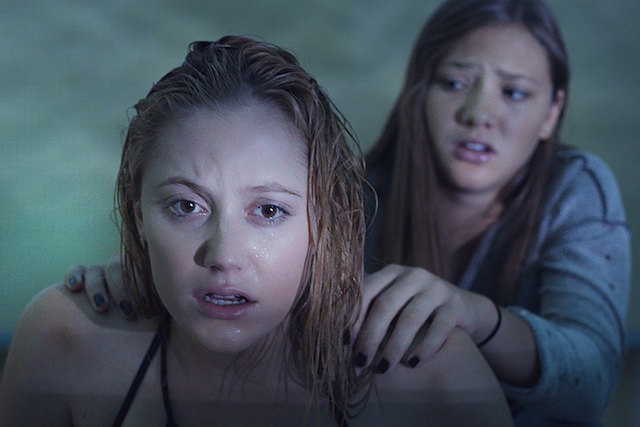
“Creepy, suspenseful and sustained,” writes The Hollywood Reporter’s David Rooney, “[It Follows] plays knowingly with genre tropes and yet never winks at the audience, giving it a refreshing face-value earnestness that makes it all the more gripping.”
This 2014 old school horror film from David Robert Mitchell is a keenly observed, expertly lensed, micro-budgeted miracle steeped in atmosphere––with a genius John Carpenter/Goblin-inspired soundtrack from Disasterpeace––that had genre fans shrieking in delight, when not cowering in fear, of course. Deliberately pastiching ‘70’s and ‘80’s slasher films where teens are routinely punished for being sexually active, It Follows slyly works in alternate allusions and textures to these tropes, with a feminist slant and De Palma-esque flourish to spare.
With a breakout performance by Maika Monroe as Jay our ill-starred heroine battling a sexually transmitted curse that shape-shifts into some of the creepiest ghouls going. This is the film that rescued indie horror from torture porn and proved that modern horror can be a compendium of what’s gone on before and still be transcendent, terrifying, and teeming with interpretations.
Sensitive to the nicety and nuance of teenage affections, astutely aware of what diehard horror fans want (subversions and reinventions abound!), It Follows announces the arrival of a new suspense master in Mitchell and presents us with his first small-scale chef d’oeuvre.
19. Nosferatu the Vampyre (1979)

Werner Herzog’s redaction of F.W. Murnau’s 1922 German silent horror classic is a mesmerizing mindfuck with a terrifying Klaus Kinski in the titular role. With touches of the surreal and some deliberate deviations from the familiar Bram Stoker tale of Dracula and his relocation to a more settled estate, Herzog’s vision is frequently apocalyptic and more macabre than you might expect.
Jonathan Harker (Bruno Ganz) is a real-estate agent from Wismar, Germany, who treks through the Carpathian Mountains to tailor the relocation of the despondent Count Dracula from his imposing castle. Once there the Count is instantly infatuated with a portrait of Jonathan’s his wife, Lucy (Isabelle Adjani), and he agrees at once to relocate his estate to Bremen.
Expectedly, things get dark pretty quick and the sparring between Kinski and Adjani is lyrical, fantastical, and frightening. Paced unusually for a horror film, Herzog’s approach is stylish and hypnotic, full with black humor business and slowly scary reveals there really isn’t another vampire film quite like this eccentric and enduring specimen.
18. The Descent (2005)
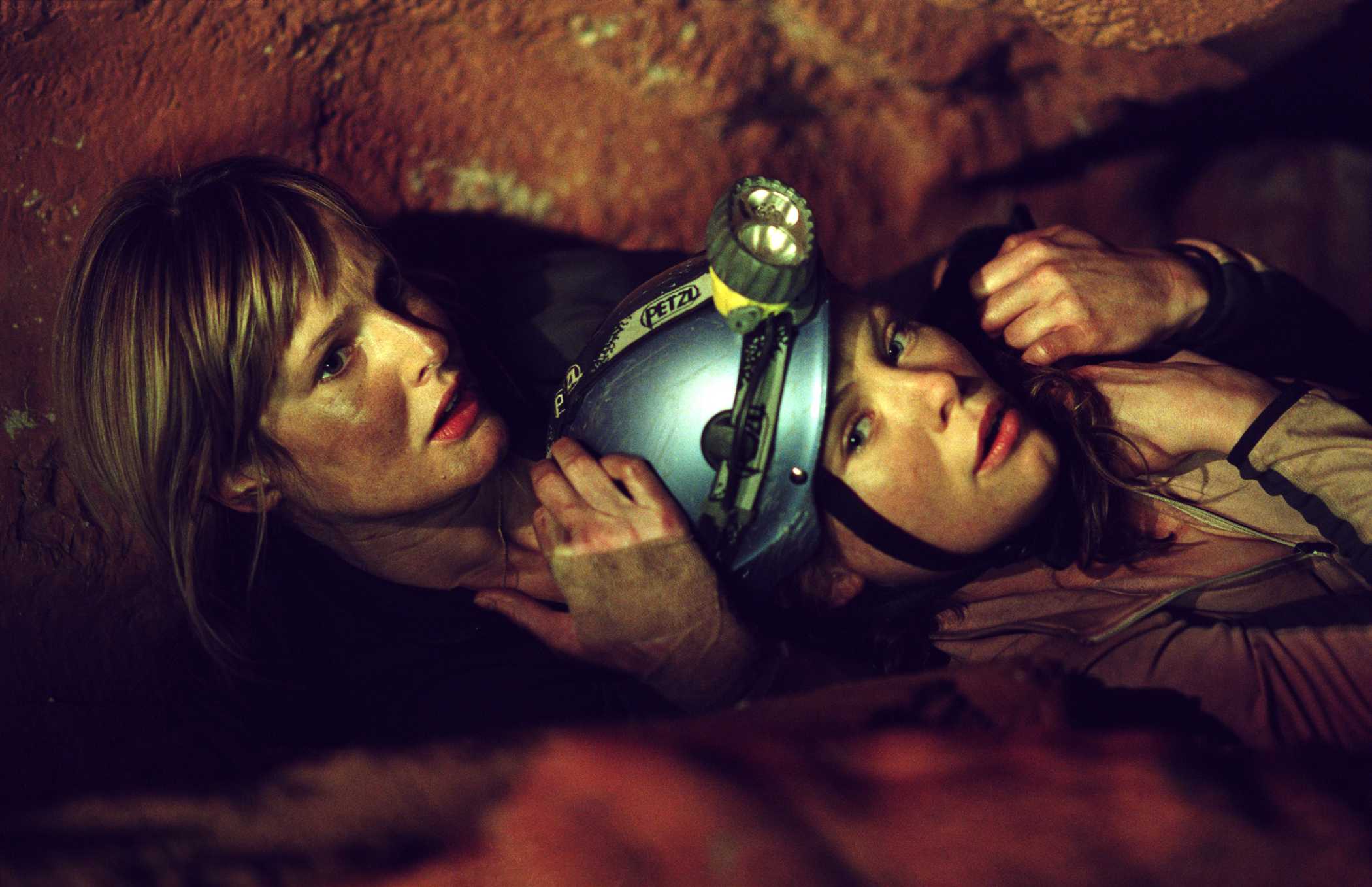
Some real serious shit goes down in The Descent. That wasn’t even just an excuse for a really bad pun. Uneasily dactylic and startling from the get-go, writer/director Neil Marshall weaves the lives of six friends together in an increasingly tight-knit underground cave system through the Appalachian Mountains. For Sarah (Shauna Macdonald) and Juno (Natalie Mendoza), their bittersweet past surfaces as the women discover, most grotesquely, that they are not alone in the crumbling, unmapped, dripping, awful, nasty-ass caves.
This is what happens when a thoroughly solid drama also happens to be a horror: stirring character development, palpable tension submerging into madness, unforgettably frightening creatures, and it’s just so awesome that it’s an all-woman cast. Even while bloodily contending with predatory subhuman mutants these dames get catty retribution on each other––so no, not even stabbing gruesome monsters in the face together will smooth things over regarding that time someone maybe slept with someone’s hubby.
This is the film that the New York Times film scribe Manohla Dargis described as “indisputably and pleasurably nerve-jangling”, and Bloody Disgusting said is “the purest kind of horror film – ruthless, unforgiving, showing no mercy.” It tops are list for all of its sly maneuvers and nightmarish visuals. The Descent is a macabre masterwork.